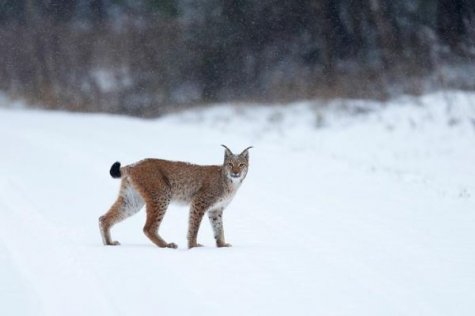At outskirts of forage fields ...
Photo: Sven Začek, www.zacekfoto.ee
Translation: Liis
Lynx
Lynx; Eurasian lynx Harilik ilves or ilves Lynx lynx, also Felis lynx
.... we usually find thickets and coppices. On slightly higher dry ground traces of someone’s lie can be found. A place like this, for lying in ambush for imprudent forest creatures, suits a lynx. Being a feline the lynx is a very good climber but never stalks its prey from trees – rather it climbs there for refuge from danger.
It rests during daytime but still observes the surroundings carefully, and starts its hunting life when dusk falls. It creeps up close to potential prey with great caution. The distance to the prey should be about two or three long, powerful jumps – about twenty or thirty metres. If the attack fails it generally does not pursue the victim. After that it often passes into a neighbouring forest, so we can see lynx tracks crossing roads or, very rarely, meet the lynx itself.
The beautiful and powerful animal is mostly a solitary roamer who uses its energy resources carefully. Characteristically for felines it has good eyesight: the doings of a mouse would be detected some hundred metres away. The daily food need of an adult lynx is about a kilo but all days are not alike. The lynx carries its slain prey up to a few hundred meters away to a sheltered place. Food remains are hidden in snow in winter but the lynx does not eat remains that are frozen through – its teeth do not allow it. So the remains go to foxes, raccoon dogs, smaller predators or rodents, or observant ravens discover the hidden things.
With a couple of severe winters when the number of roe deer has become very low the number of lynxes is estimated to have fallen too. Lynxes with mange have also been shot; foxes and raccoon dogs spread the illness in the forest. Lynxes slay foxes but do not eat them.









